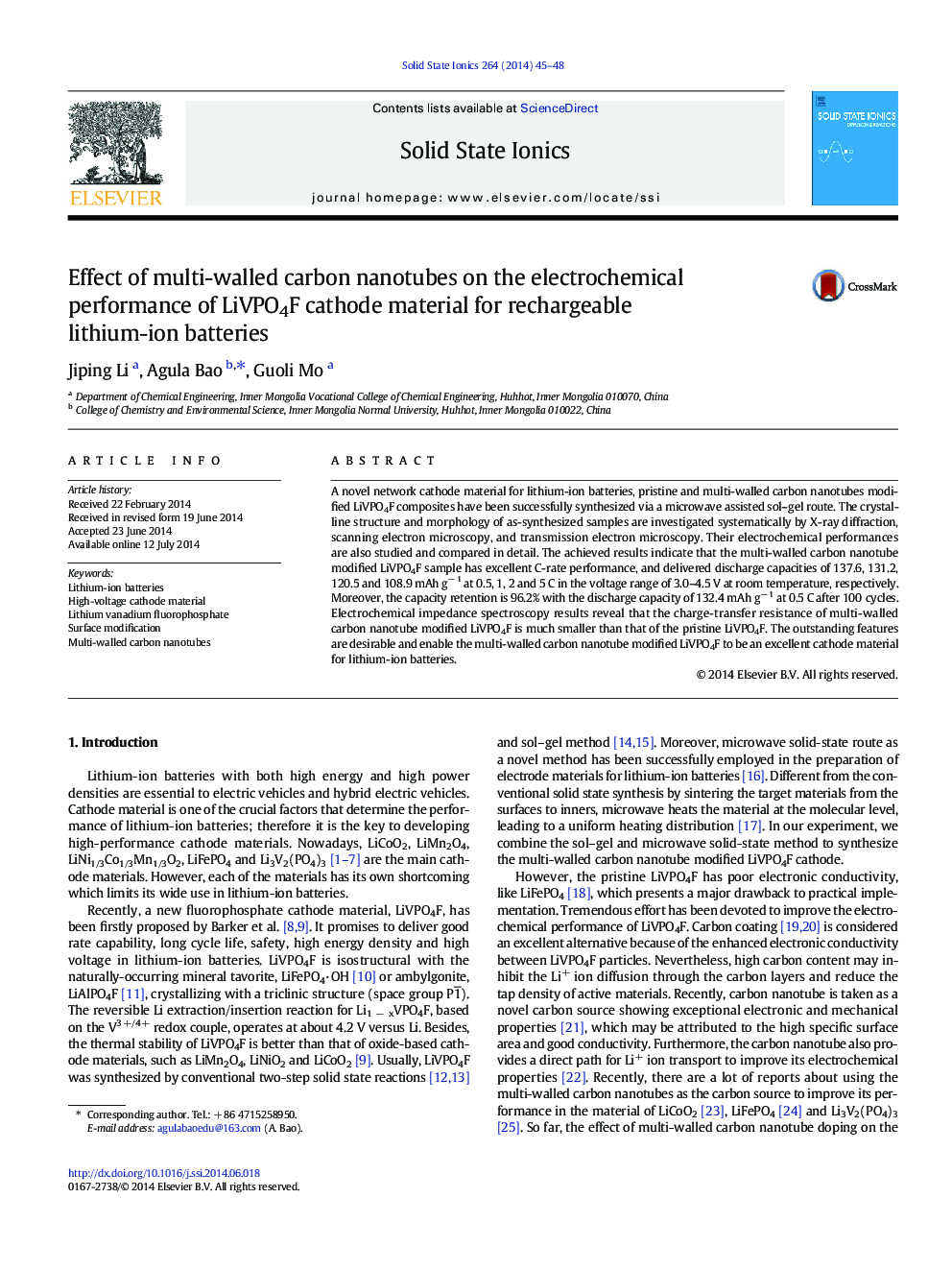| Article ID | Journal | Published Year | Pages | File Type |
|---|---|---|---|---|
| 1297842 | Solid State Ionics | 2014 | 4 Pages |
•MWCNTs-modified LiVPO4F is synthesized via a microwave assisted sol-gel route.•The existence of MWCNTs can increase the electronic conductivity.•The obtained high-voltage material shows excellent electrochemical performance.
A novel network cathode material for lithium-ion batteries, pristine and multi-walled carbon nanotubes modified LiVPO4F composites have been successfully synthesized via a microwave assisted sol–gel route. The crystalline structure and morphology of as-synthesized samples are investigated systematically by X-ray diffraction, scanning electron microscopy, and transmission electron microscopy. Their electrochemical performances are also studied and compared in detail. The achieved results indicate that the multi-walled carbon nanotube modified LiVPO4F sample has excellent C-rate performance, and delivered discharge capacities of 137.6, 131.2, 120.5 and 108.9 mAh g− 1 at 0.5, 1, 2 and 5 C in the voltage range of 3.0–4.5 V at room temperature, respectively. Moreover, the capacity retention is 96.2% with the discharge capacity of 132.4 mAh g− 1 at 0.5 C after 100 cycles. Electrochemical impedance spectroscopy results reveal that the charge-transfer resistance of multi-walled carbon nanotube modified LiVPO4F is much smaller than that of the pristine LiVPO4F. The outstanding features are desirable and enable the multi-walled carbon nanotube modified LiVPO4F to be an excellent cathode material for lithium-ion batteries.
